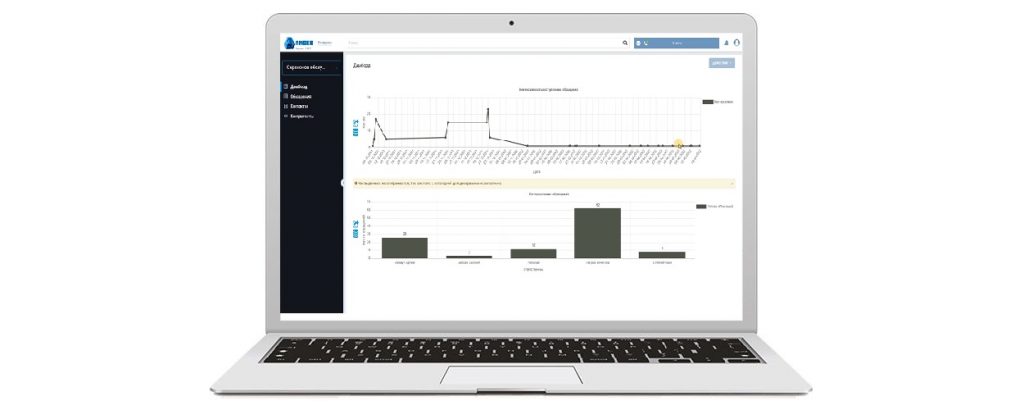
Request Processing Center
It is designed to automate the work of after-sales services and is useful for organizations providing after-sales service for their customers, as well as companies with a large number of automated workplaces.
AMBER Service Desk works perfectly in conjunction with AMBER CRM and provides comprehensive work with customers after the sale.
Tasks
- Systematize the work of internal and external service services and create a single entry point for all requests;
- Increase the speed of processing service requests, manage priorities;
- Control the quality and timing of request processing
- Distribute the load evenly across operators and support lines
- To build operational work with incidents
- Analyze the efficiency of the service services.
Functional features
- Registration, routing and control of processing of appeals and incidents, according to established regulations;
- Flexible configuration of request routing rules;
- Connecting chatbots to reduce the burden on operators;
- Informing clients about the status of the request and the progress of work on it;
- Coordination of interaction between support services and external partners;
- Managing the lifecycle of an incident before it is closed;
- Quality control of processing requests and compliance with regulations;
- Analytics on requests, speed of incident resolution, operator workload;
- Integration with systems and services involved in the processing of requests.

Effects after implementation
- Creation of a single request processing center:
100% control of processing requests from all involved communication channels: telephony, mail, social networks, messengers, websites, internal portals. - Increasing the quality and speed of support:
Built-in business processes for processing requests according to internal rules and chatbots, which reduce the load on operators when processing standard requests, accelerate the closing of applications by 2-3 times. - Reduced incident resolution costs:
The exclusion of numerous additional interactions on applications reduces the costs of the employer and allows you to process more applications in less time, without increasing the number of support specialists. - Increased user loyalty:
Due to the prompt solution of emerging technical problems, the satisfaction of our own employees and external customers increases. - Transparent analytics:
Thanks to the built-in reports, you can see statistics on handling requests in AMBER SD, evaluate the speed of incident resolution, the uniformity of operator workload and their effectiveness. - Process control:
AMBER SD has a number of built-in template processes: registration and categorization of requests, combining requests, evaluating the quality of operator work, using an internal knowledge base, and others. The built-in business process designer allows you to automate any non-standard processes of complexity.
When does the need for a Service Desk arise?
The need for this solution appears in the following cases:
- There is a high load on the customer service and a large flow of requests.
- Unsatisfactory request processing times due to the lack of a single entry point and regulated processes.
- Customer losses due to the unsatisfactory quality of technical support.
- Lack of technical service control tools.
- The need for regular and reliable analytics on the number and quality of requests received by the customer service.
The main difference between AMBER Service Desk and existing analogues on the market is
the flexibility of the AMBER platform used, which allows you to customize and quickly adapt
the solution to the individual needs of customers and their business processes.
Links and materials
AMBER SD Presentation
Low-code platform. 70% of the project is implemented without programming. The platform is open to architecture changes. Training and documentation are available.
Video clip on the possibilities
Check out the capabilities of AMBER SD in our presentation video
Basic cost of AMBER SD
Installing licenses on the server, configuring the interface to meet requirements, configuring user rights and roles, according to the information security policy, etc.